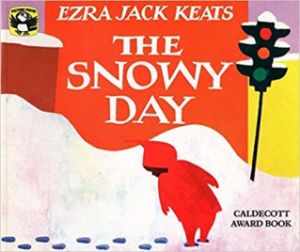By Kaitlyn Guynn

In the Pediatric Intensive Care Unit at WVU’s Ruby Memorial Hospital, an infant was connected to various monitors, including one that registered the beep, beep, beep of the baby’s rapid heart rate.
A medical student read to the baby.
“The child’s heart rate slowed down to a relaxed state,” said Katie Ridenour, School Intervention Specialist at Ruby Memorial Hospital.
The student is participating in a new effort of the medical school and Read Aloud West Virginia.
Ridenour, a former teacher in Marion County, works to help children maintain as many normal childhood routines and activities as possible while they are in the hospital.
Having seen the success of Read Aloud in Marion County, Ridenour reached out to Read Aloud, said Read Aloud Executive Director Mary Kay Bond.
They worked together to organize 13 medical students to read regularly to pediatric patients, sometimes two to four children at a time.
The educational benefits of reading aloud to children are well established. Volunteers have witnessed other benefits among these children. In addition to the baby who was soothed, children and their parents are pleased when readers enter the hospital room.
“For a volunteer to come and knock, and just visit to read to you, their faces light up knowing that it’s not for a medical procedure,” Ridenour said.
“It’s been great, with positive feedback from the families,” she said. “It’s a nice program, and it’s been really satisfying.”
In addition to serving children in the hospital, this effort gives medical students the opportunity to discover the value of reading to children from birth so they can model and encourage read aloud habits in their own practices in the near future.
“Absolutely,” said Levi Snedegar, a first-year medical student who plans to take the experience into his practice, whether that turns out to be pediatrics or primary care.
“I was actually in a program where we would shadow a child visit,” he said. “They would receive a book based on their age or cognitive development.”
“We want to connect to health care providers,” Bond said. “Health care providers see children at much earlier stages of development, and we seek to reach children at the earliest stage possible. It is a critically important time and sets the tone for a child’s education.”
When children are read to from birth, “They come already primed and ready before they enter the schoolhouse door,” she said.
The American Academy of Pediatrics began in 2014 to recommend reading to children every day from birth. Reading to babies not only strengthens their bonding with caregivers, but also increases their language skills, including vocabulary. Reading aloud to children boosts brain activity and social and emotional development.
At the WVU School of Medicine, students feel the benefit of reading to children, as well as their young patients.
“A lot of them are volunteering because they have pediatrics in mind,” Ridenour said. “It gives them good exposure for treating [patients] as a whole, and not just about treating them medically. But emotionally, cognitively, and physically as well.”
“This program is an integral part of their inpatient care, and a rewarding part as well, for first- and second-year medical students,” Snedegar said. “If this program was implemented across the county, there would be less of a burnout rate.
“It is an absolutely awesome experience. Too often you get tied down with studying and not allowed to actually visit with the children.”
——-
Read Aloud West Virginia wants to partner with health care providers around the state to help them help families, and to motivate children to want to read. To explore the possibilities, contact us at stateoffice@readaloudwv.org.
Kaitlyn Guynn is a student at the University of Charleston.













 The UPS Store, Inc. will donate $10,000 worth of books from
The UPS Store, Inc. will donate $10,000 worth of books from 
 e little wheels turning. I love to stimulate the imagination — what if…?
e little wheels turning. I love to stimulate the imagination — what if…?





